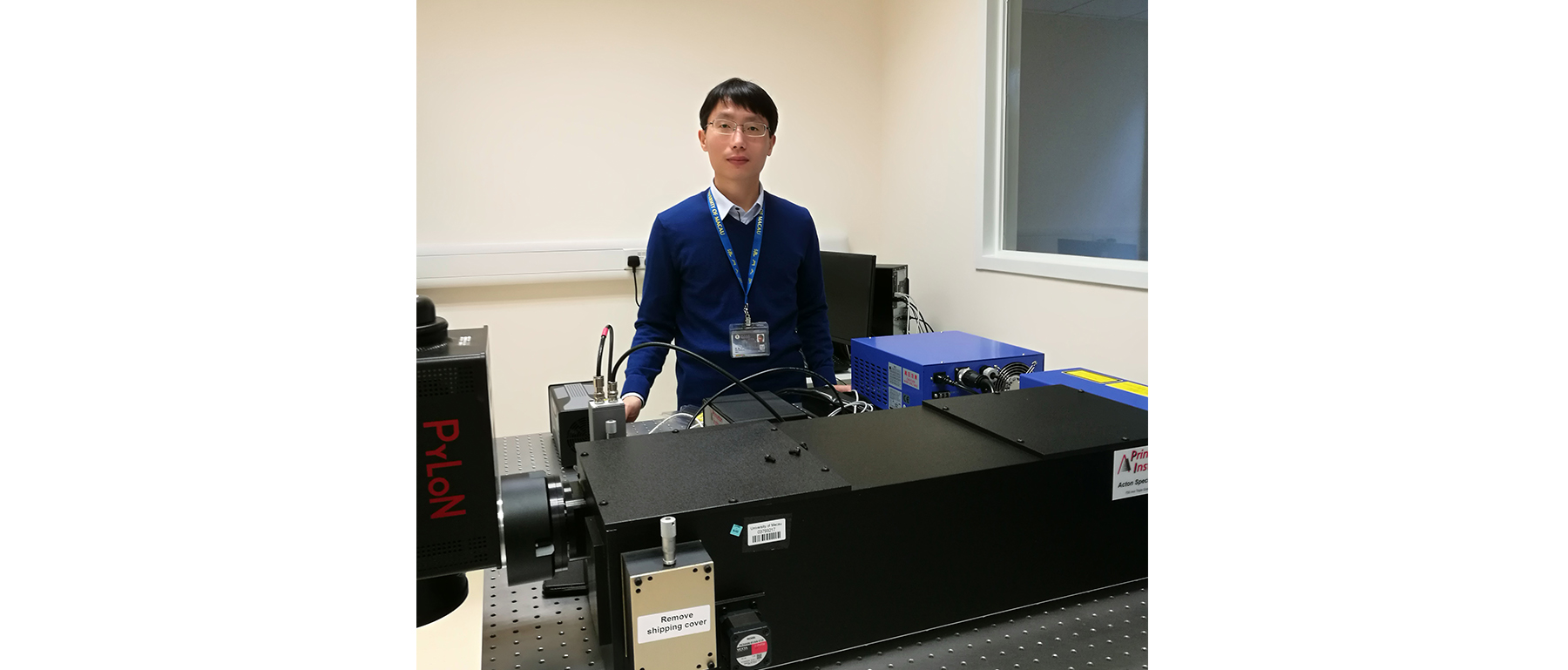A research project jointly conducted by the University of Macau (UM), Nanjing Tech University, and Nanyang Technological University, Singapore, has achieved a significant breakthrough, laying a theoretical foundation for materialising high-efficiency and low-cost perovskite light emitting diode (LED). The related finding has been published in Nature Communications. The research can help to significantly improve the luminous efficiency of perovskite LED and have the potential to bring low-cost, high-efficiency LED displays and LED light sources into daily life.
Researchers from the three universities discovered that the slow bimolecular recombination that drives three-dimensional lead-halide perovskites’ outstanding photovoltaic performance is conversely a fundamental limitation for electroluminescence. By probing the microscopic carrier dynamics with femtosecond laser spectroscopies, the slow bimolecular recombination limitation can be overcome by tailoring the three-dimensional perovskites into van-der-Waals-coupled Ruddlesden-Popper perovskite multi-quantum-wells. High-efficiency electroluminescence can be achieved with this new type of perovskites. The research project was jointly led by Dr Xing Guichuan, assistant professor from UM’s Institute of Applied Physics and Materials Engineering; Prof Huang Wei, president of Nanjing Tech University; and Prof Sum Tze Chien from Nanyang Technological University.
According to Dr Xing, the newest technology available on the market is organic light emitting diode (OLED). Because of the low-temperature solution processability, large range emission colour tenability, and low cost, the perovskites are promising alternatives to the organic molecules for LED applications. UM’s research can help to significantly improve the luminous efficiency of perovskite LED and promote the development and commercialisation of this technology.
Dr Xing is one of the initiators of the research in the application of this new type of perovskites. In 2014, the paper first-authored by him, titled, ‘Low-temperature Solution-processed Wavelength-tunable Perovskites for Lasing’, was published in Nature Materials. It has been cited more than 600 times. Another paper first-authored by him, titled ‘Long-range Balanced Electron-and Hole-transport Lengths in Organic-inorganic CH3NH3PbI3’, was published in Science magazine in 2013, and has been cited over 1,800 times. In 2016, he received the PVSEC-26 Young Scientist Award, in recognition of his outstanding contributions to the research in perovskite optoelectronics.
Media Contact Information:
Communications Office, University of Macau
Albee Lei Tel:(853) 88228004
Kelvin U Tel:(853) 88224322
Email:prs.media@um.edu.mo
UM Website:www.umac.mo

